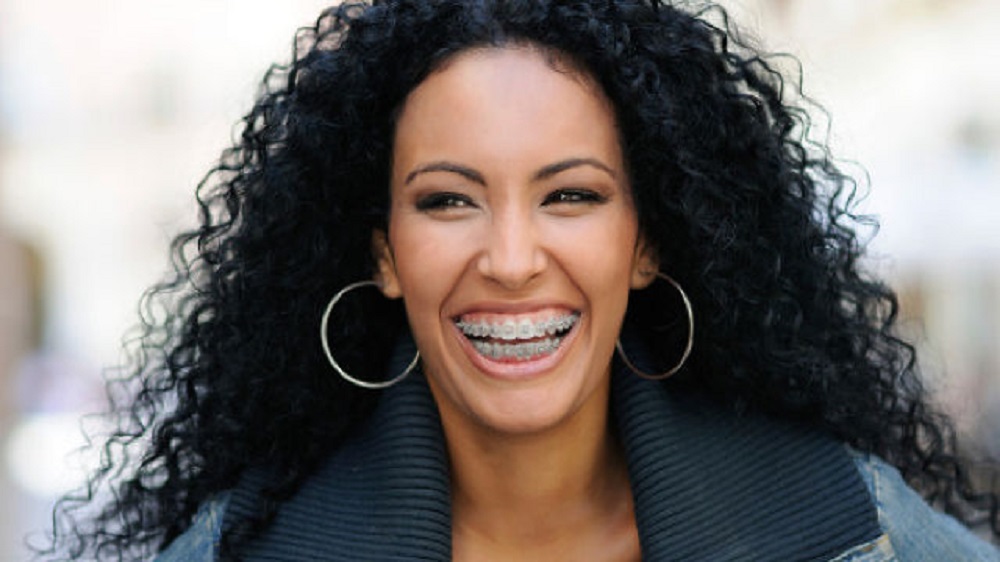Recent developments in orthodontic practices have given rise to the creation of many different kinds of corrective solutions. This more comprehensive range of treatment options has made orthodontics more accessible. As a result, more adults are now seeking braces and other corrective orthodontic procedures.
For many adults seeking braces, however, it can be challenging to know where to begin. Concerns about cost and appearance often arise. Indeed, the cost is one of the main reasons that so many adults seeking braces did not get them as children. Another concern many adults have is how the braces affect their appearance.
If you’re an adult considering braces, don’t deter yourself from misconceptions or preconceived notions. Below we discuss a few factors that will be integral in your decision to help you have a more informed conversation with your orthodontist near you. Remember, a better smile is within reach, and it doesn’t have to cost you a fortune or make you feel like an awkward teenager.
The End Game The first thing to keep in mind is whatever motivated you to seek corrective orthodontics in the first place. Whether you need extensive work or seek to straighten out a few teeth, keeping your goal in mind will help you get through the process. Why? Because it’s going to be long and uncomfortable.
It is also essential to honestly discuss your goal with your orthodontist before you begin. You both must be on the same page about the results you hope to achieve – and what needs to be done for it to happen. It will also give your orthodontist a chance to make sure all your goals are attainable and help them create the right treatment plan for you. With a complete picture of what work will be required, they can also give you an accurate projection of the costs.
1. Anatomy and Physiology
One of the most significant considerations you and your orthodontist will face is your mouth’s overall health and anatomy. It will dictate what type of braces you can use, how long you’ll have to wear them, any other procedures that need to be done, and how effective they will be.
Without getting too technical, here are some of the factors that will come into play and why they matter:
-Age
Doctors recommend that someone who needs braces get them as a child or teenager because adults can have more health complications than children. It can include bone loss and issues with blood supply to the teeth. The young bone still growing is softer and more malleable than older adult bone. Moving your teeth into new positions can be harder (i.e., take longer and be more uncomfortable).
-Oral Health
Your overall oral health will be another huge factor. It includes issues such as cavities, rotten teeth, chipped or cracked teeth, plaque build-up, and gum disease. All this will need addressing before or during having braces and will influence which types of braces you can use.
-Tooth Extractions
Your orthodontist may also tell you you must have some teeth extracted for the braces to work. It could be because the tooth is too damaged, or because it is impacted, or because your mouth is too crowded. Also, if you’ve had teeth pulled in the past, it may cause issues with realigning your teeth. Old extraction sites may require prosthetic bone implants to support other teeth.
1. What You’re Willing to Do
When you sit down with your orthodontist to discuss your treatment options, it is essential, to be honest with them – and yourself – about what you’re willing and able to do. If you comply with the doctor’s orders, the best treatment plan and medical care worldwide won’t make any difference.
Some things to consider include how long you’re willing to wear the braces. Do you have a wedding to attend in 8 months and need them off by then? In addition, consider the following:
- Level of tolerance for discomfort
- Concern for your appearance
- Availability to come to all your follow-up appointments
- The amount of money you’re willing to invest
- Willingness and ability to comply with orthodontic instructions – such as wearing mouth guards, avoiding certain foods, and brushing and flossing twice daily.
2. Types of Braces Available
Based on your health and goals, your orthodontist will likely make some recommendations as to which types of braces you should use. Some of the most common are:
-Conventional or Traditional Braces
These are what most people think of when they hear the word. They are often the least expensive and fastest type of braces. However, they are pronounced, and many adults balk at wearing them. Luckily now they can be affixed in white or ‘tooth colour,’ making them less visible than the usual metal.
-Lingual Braces
These are exactly like traditional braces, except all the hardware is on the backs of the teeth. It makes the braces virtually unnoticeable. However, they are more expensive, are harder to keep clean, and significantly impact the wearer’s speech.
-Invisible Aligners (Invisalign)
These clear braces come as mouthpieces that gradually change shape as the teeth shift. They are completely removable, invisible, and more comfortable than traditional braces. However, they are more expensive and not practical for severe orthodontic corrections.
Get in Touch for a Consultation!
If you’re ready to get fitted for adult braces after considering all these factors, get in touch with us today! At Valley Ridge Dental Centre, we offer many different braces, each with a different price range, duration, and appearance. With our selection, you’re guaranteed to find a braces solution just right for your smile! Contact our dentist in NW Calgary today.

